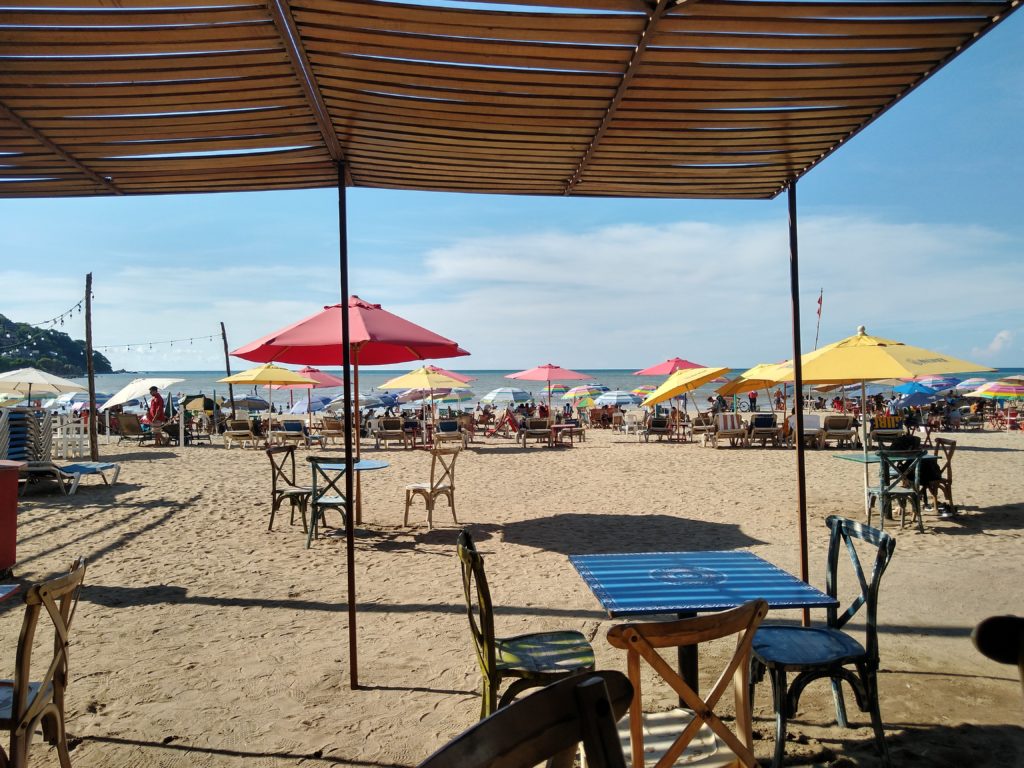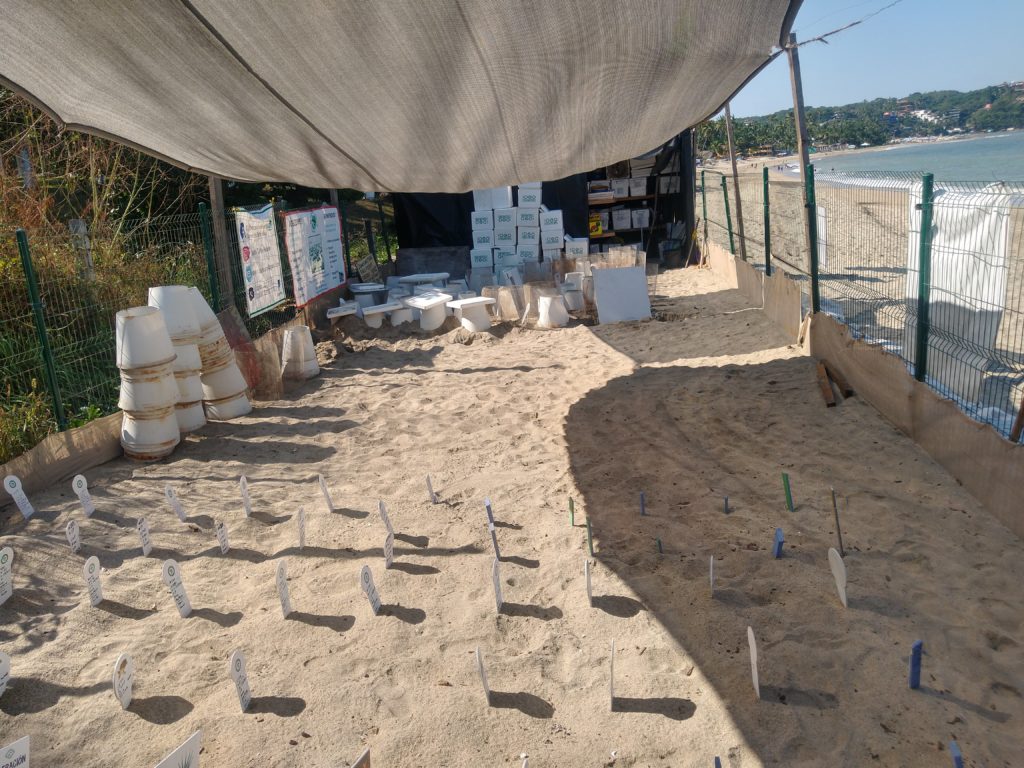Turtle Hatchery in Sayulita – when help is needed

The Pacific coastline of Mexico is renowned as a place giant sea turtles come ashore to lay their eggs. Due to human encroachment and theft, kind souls have to give a protecting hand. We appreciated our experience with the local Turtle Hatchery in Sayulita.
A protecting arm – the work of the turtle hatchery in Sayulita

On Sayulita beach, north end, there is Campamento Tortuguero turtle hatchery, which sees hundreds of turtles arrive on the sands to lay their eggs. This is the main turtle hatchery in sayulita. In fact, their work is needed.
Human Interference

Some of the interference is simple encroachment on the space wildlife use. This can make it difficult for other species. That being the case, we are all a bit guilty.
Unfortunately, some humans just won’t leave well alone and go much further. These endangered creatures have enough natural enemies to avoid without having greedy people killing the turtles and / or stealing the eggs for their own profit. The turtle hatchery in Sayulita is there to offer a helping hand in safeguarding the future of the beautiful turtles as well as educating people to assist the survival.
When the turles lay their eggs, workers for the organisation carefully gather them and bring the eggs to the hatchery. They need many eyes to alert them to a birth so they can beat the poachers.
An educational evening

The cumulation of the Turtle hatchery in Sayulita work is the release of the baby turtles. Furthermore, this affords them the opportunity to pass on their knowledge to future generations. Additionally, being amazed while learning is a wonderful experience for kids young and old.
Eggs

The turtles eggs hatch in approximately 45 to 70 days. The sex of sea turtles and the sand’s temperature plays an important role. If it’s hotter, the eggs hatch faster!
The number of eggs in a turtles nest, is known as a clutch. It will usually contain around 80-180 eggs! Nests are marked with the date, the number of eggs, and the expected hatching date, then their carers dig them up for release.
Be careful!
The eggs have to be handled very carefully. Not only the eggs, but the hatchlings need to be treated with extreme care. We had done our research before visiting a release evening.
Baby Turtles should not be handled (by bare hands), unless in an emergency, as this could cause them distress. However, we were disappointed to see that some from Sayulita Turtles conservation did handle the turtles. Consequently, a bad example is set as a few tourists also handled unnecessarily. However, most of the carers, from the turtle hatchery in Sayulita, abided by their own rules and only handled with gloves when they had to.
The baby turtles are so delicate that you could break their shell, or even their essential food sac; used to store food for up to three days. Oils from your hands could also disturb the imprinting process, required for their return to the beach should they survive into adulthood to mate.
The release

At sunset, around 7.30 / 7.40 pm (an hour earlier after the clocks change in October), the turtles are released from their tiny coloured plastic buckets.

There sometimes would be appropriately 30 in one bucket, all on top of one another, their little flippers flapping about.
It is also best to let the turtles crawl in the sand themselves after hatching. This is known as the imprinting process, which helps them to later return to the same beach to nest.

That is why part of the beach is cordoned off to allow them a good stretch to crawl down as they head for the sea.

Home time – the hatchery in Sayulita work is done
Watching the babies enter the ocean was a sight to behold. They have a slow, awkward crawl but are superb swimmer’s. As the waves took them, there is a heart in mouth moment when they get swept away. However, swimming is a natural reaction and we hoped for the best as we sent them on their way with a blessing. This would be the biggest swim of their lives!
Unfortunately, it looked like some baby turtles were not so lucky as there was no movement at all. Nevertheless, this is part of natural selection.
Fun facts

- The ones who did make it may have a long wonderful life ahead. Do you know sea turtles can live up to 100 years old? Some have been known to last over 200 years old!
- Turtles have been around since dinosaur times. In fact, the oldest fossil of a turtle has been dated to around 120 million years. I’d say they’ve learnt a few things over the years!
- Their favourite food is jellyfish, although, they also think crabs, seacumbers, algea and seaweed are delicious!
- Female turtles return to where they were born to lay their eggs. This is why the turtle hatchery in Sayulita is so important. This gives the species a chance of survival.
- Slowing their heart rate to conserve oxygen, sea turtles can hold their breath for hours underwater.
- Turtles have glands to empty excess salt from their eyes. This gives the appearance that they are crying.

If you enjoyed this then check out some more of our wildlife adventures in Florida and Costa Rica.



1 thought on “Turtle Hatchery in Sayulita”